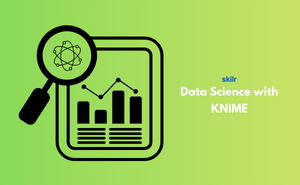👇 CELEBRATE CLOUD SECURITY DAY 👇
00
HOURS
00
MINUTES
00
SECONDS

Learning Data Science with KNIME means gaining the ability to turn raw data into insights without needing deep coding skills. KNIME provides a drag-and-drop interface where tasks such as cleaning messy data, combining multiple datasets, and building predictive models can be done visually. It allows professionals to explore big datasets, run advanced algorithms, and present results in charts and dashboards.
In simpler terms, KNIME acts like a toolbox for data handling and analysis. Whether you want to understand business performance, predict customer needs, or test scientific hypotheses, KNIME makes the process straightforward and visual. It bridges the gap between complex programming and practical, everyday data analysis.
This exam is ideal for:
Industry-endorsed certificates to strengthen your career profile.
Start learning immediately with digital materials, no delays.
Practice until you’re fully confident, at no additional charge.
Study anytime, anywhere, on laptop, tablet, or smartphone.
Courses and practice exams developed by qualified professionals.
Support available round the clock whenever you need help.
Easy-to-follow content with practice exams and assessments.
Join a global community of professionals advancing their skills.
No, most tasks are drag-and-drop based, but you can add Python or R scripts if needed.
Yes, it provides built-in ML algorithms and integrates with external libraries.
It prepares you for roles in data analytics, business intelligence, and data science.
Python, R, Java, and SQL can be used within workflows.
Statistical analysis, machine learning, predictive modeling, and visualization.
Yes, it can process large volumes of data efficiently.
Yes, its visual workflow system makes it easy for newcomers.
Analysts, researchers, students, and anyone interested in learning practical data science.
KNIME is a platform that simplifies data preparation, analysis, and visualization through workflows.
Finance, healthcare, retail, marketing, IT, and research organizations.